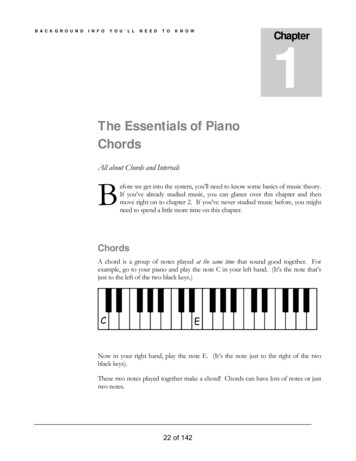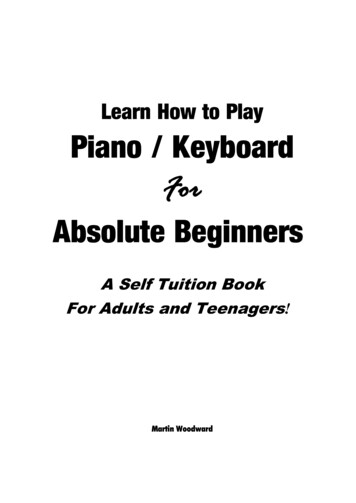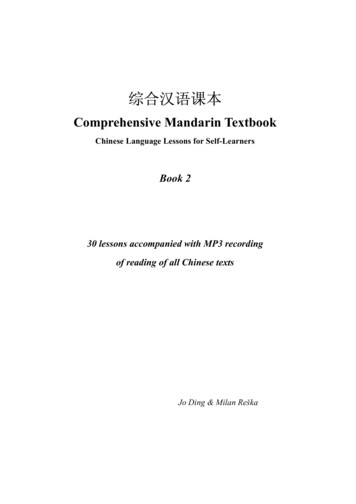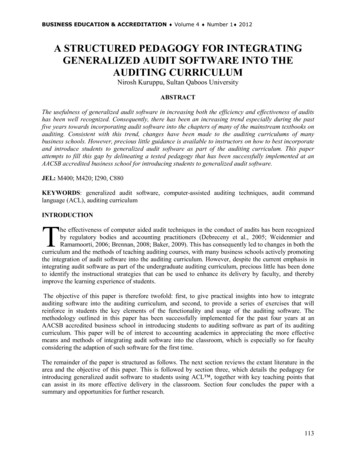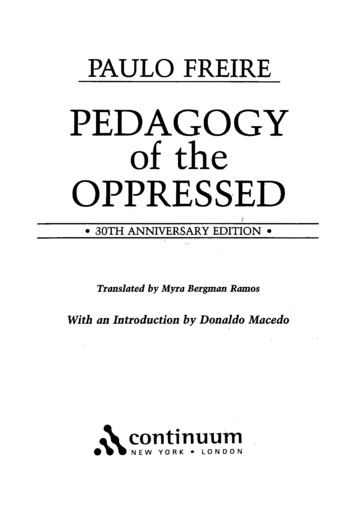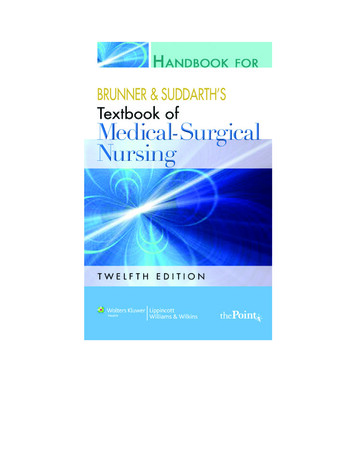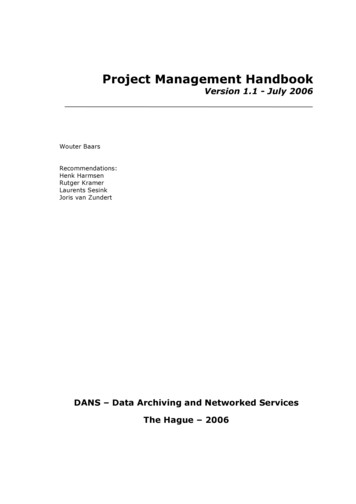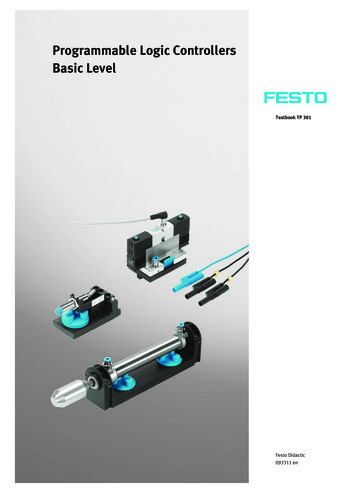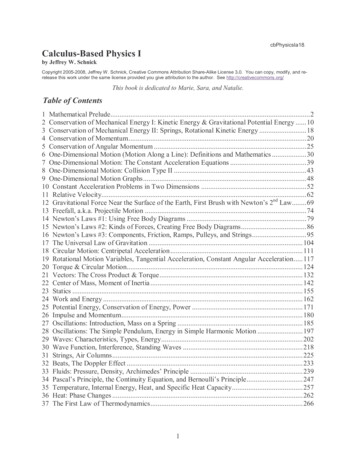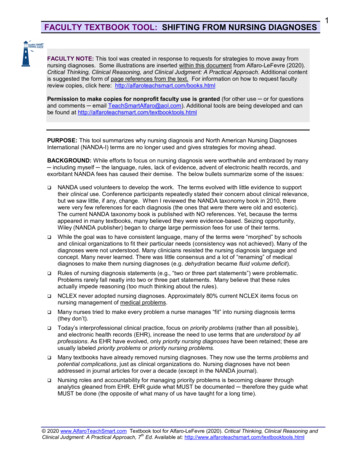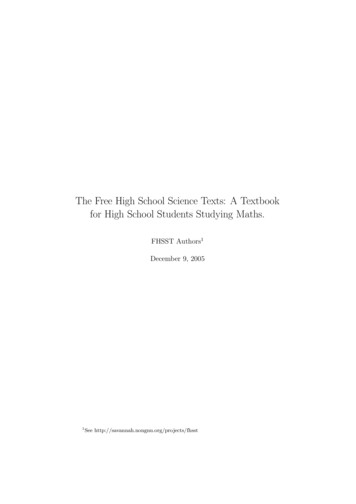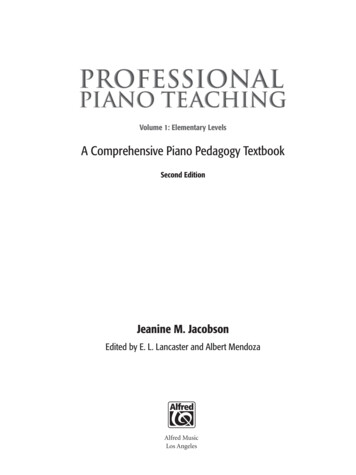
Transcription
Volume 1: Elementary LevelsA Comprehensive Piano Pedagogy TextbookSecond EditionJeanine M. JacobsonEdited by E. L. Lancaster and Albert MendozaAlfred MusicLos Angeles
viCONTENTSPreface.iiiAcknowledgments. vCHAPTER 1:THE ART OF PROFESSIONAL PIANO TEACHING. 1Characteristics Common to All Professionals . 1Characteristics of Professional Piano Teachers. 2Developing a Teaching Philosophy. 7Helpful Questions for Developing a Personal Teaching Philosophy. 9Professional Resources for Piano Teachers. 13Summary. 14Projects for New Teachers. 15Projects for Experienced Teachers. 15CHAPTER 2:PRINCIPLES OF LEARNING. 17From the Known to the Unknown. 17Discovery Learning and Rote Learning. 18Prevention of Errors. 21Applying Principles of Discovery Learning and Systematic Presentation. 24Correction of Errors. 25Experience and Follow-Through. 26Good Learning Habits . 26Trial and Error . 27Varied Activities. 28Simultaneous Achievement of Multiple Goals. 28Individual Learning Styles. 29Sound, Feel, Symbol, Name. 30Summary. 32Projects for New Teachers. 33Projects for Experienced Teachers. 34
viiCHAPTER 3:BEGINNING METHODS. 35Note-Reading Approaches. 35Counting Approaches. 38Choosing a Beginning Method. 42Specific Criteria for Evaluating a Beginning Method. 44Methods for Special Age Groups. 55Teaching With or Without Printed Methods. 56Summary. 57Projects for New Teachers. 58Projects for Experienced Teachers. 59CHAPTER 4:TEACHING BEGINNERS AND ELEMENTARY STUDENTS. 60Concepts and Skills Covered in Early Instruction. 60Starting a Beginning Student. 82Common Problems of Beginners. 88First-Year Goals. 97Lesson Plans and Assignments. 98Summary. 116Projects for New Teachers. 117Projects for Experienced Teachers. 117CHAPTER 5:TEACHING RHYTHM AND READING. 118Teaching Rhythm. 118Teaching Reading. 129Summary. 139Projects for New Teachers. 141Projects for Experienced Teachers. 141CHAPTER 6:TEACHING TECHNIQUE AND MUSICAL SOUND DEVELOPMENT. 142The Natural Way to Play—Good Posture. 142The Role of the Whole Arm . 144Appropriate Hand and Finger Positions. 146
viiiMoving Out of Hand Positions. 148The Role and Development of the Fingers . 149Hand Independence. 152Playing Scales. 153Other Technical Skills and Concepts. 155Musical Sound Development . 159Summary . 166Projects for New Teachers. 168Projects for Experienced Teachers. 168CHAPTER 7:ELEMENTARY PERFORMANCE AND STUDY REPERTOIRE. 169Knowing the Teaching Literature. 169Selecting and Evaluating Teaching Materials. 173Determining the Difficulty of Pieces. 179Organizing Pieces in the Proper Teaching Order. 185Preparing Piece Summaries . 187Lesson Planning. 190Developing a Lesson Plan Using One Piano Solo. 193Presenting New Pieces. 195Diagnosing Problems in Pieces. 196Working on Practiced Pieces. 197Coaching Pieces . 198Assigning Homework. 199Summary. 200Projects for New Teachers. 202Projects for Experienced Teachers. 203CHAPTER 8:DEVELOPING MUSICALITY IN ELEMENTARY STUDENTS. 204The Role of Mood, Emotion and Character. 204The Role of Aural Development . 207The Role of Music Literacy. 220The Role of Creative Activities. 222The Role of Ensemble Playing. 242Summary. 245Projects for New Teachers. 246Projects for Experienced Teachers. 247
ixCHAPTER 9:GROUP TEACHING. 248Advantages and Disadvantages of Group and Private Instruction . 248Preparing to Teach Group Lessons. 252Types of Group Lessons. 253Equipment, Materials and Games . 263Using Digital Pianos in Group Instruction . 265Scheduling Group Lessons . 266Lesson Plans and Assignments. 266Summary. 274Projects for New Teachers. 275Projects for Experienced Teachers. 275CHAPTER 10:TEACHING PRESCHOOLERS.276Advantages of Preschool Music Experiences. 276Musical Goals for Teaching Preschoolers . 277Characteristics of Preschool Music Teachers. 278Role of the Teacher in Preschool Music . 279Role of the Parent in Preschool Music . 279Characteristics of Preschoolers. 280Musical Activities for Preschoolers. 284General Teaching Strategies . 285General Musicianship Approaches for Teaching Music to Preschool Students. 286Equipment and Materials for Preschool General Musicianship Instruction. 290Teaching Piano to Preschool Students. 290Summary. 297Projects for New Teachers. 298Projects for Experienced Teachers. 299CHAPTER 11:TEACHING ADULTS. 300General Characteristics of Adult Piano Students. 301Categories of Adult Piano Students . 307General Strategies for Teaching Adults. 315Summary. 317Projects for New Teachers. 319Projects for Experienced Teachers. 319
xCHAPTER 12:TEACHING POPULAR, SACRED, AND OTHER FAMILIAR MUSIC. 320Playing Popular Music. 321Playing Sacred Music . 337Playing Other Familiar Music. 340Summary.
Piano teachers should strive to achieve the following characteristics common to all professionals: . devise methods based on their own background and education; they write exercises and pieces or supplement with books of pieces that follow the progression of concepts and skills compatible with their teaching philosophy. Most teachers, however, rely on a body of materials that has been .
